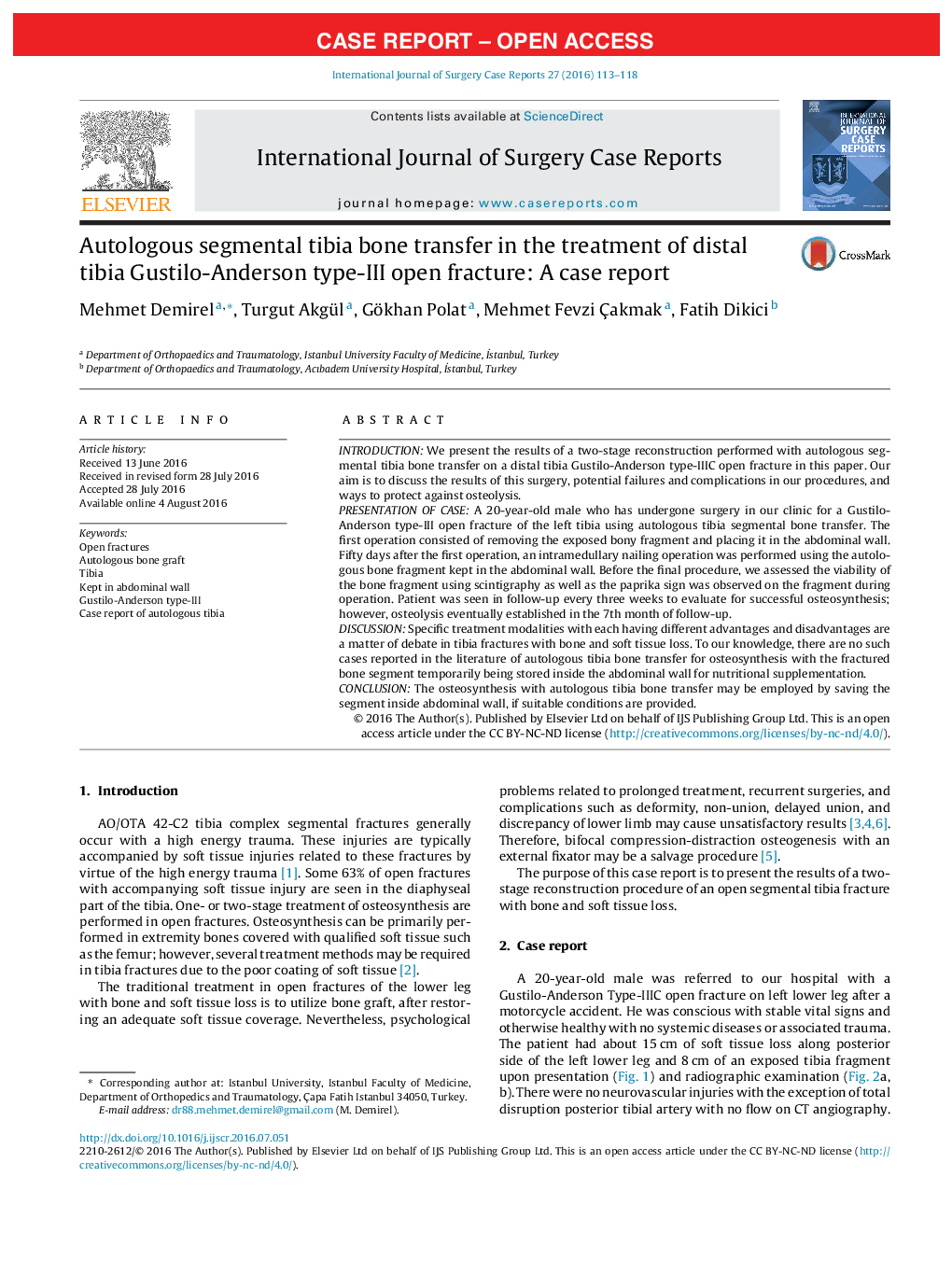| کد مقاله | کد نشریه | سال انتشار | مقاله انگلیسی | نسخه تمام متن |
|---|---|---|---|---|
| 4288321 | 1612087 | 2016 | 6 صفحه PDF | دانلود رایگان |

• Specific treatment modalities still remain a challenge in tibia fractures with bone and soft tissue loss.
• Several treatment methods may be required in tibia fractures due to the poor coating of soft tissue.
• The traditional treatment in open crus fractures with bone and soft tissue loss may cause miscellaneous complications.
• Bifocal compression-distraction osteogenesis with an external fixator may be a salvage procedure to avoid complications of traditional methods.
• The osteosynthesis with autologous tibia bone transfer may be employed by saving the segment inside abdominal wall, if suitable conditions are provided.
IntroductionWe present the results of a two-stage reconstruction performed with autologous segmental tibia bone transfer on a distal tibia Gustilo-Anderson type-IIIC open fracture in this paper. Our aim is to discuss the results of this surgery, potential failures and complications in our procedures, and ways to protect against osteolysis.Presentation of caseA 20-year-old male who has undergone surgery in our clinic for a Gustilo-Anderson type-III open fracture of the left tibia using autologous tibia segmental bone transfer. The first operation consisted of removing the exposed bony fragment and placing it in the abdominal wall. Fifty days after the first operation, an intramedullary nailing operation was performed using the autologous bone fragment kept in the abdominal wall. Before the final procedure, we assessed the viability of the bone fragment using scintigraphy as well as the paprika sign was observed on the fragment during operation. Patient was seen in follow-up every three weeks to evaluate for successful osteosynthesis; however, osteolysis eventually established in the 7th month of follow-up.DiscussionSpecific treatment modalities with each having different advantages and disadvantages are a matter of debate in tibia fractures with bone and soft tissue loss. To our knowledge, there are no such cases reported in the literature of autologous tibia bone transfer for osteosynthesis with the fractured bone segment temporarily being stored inside the abdominal wall for nutritional supplementation.ConclusionThe osteosynthesis with autologous tibia bone transfer may be employed by saving the segment inside abdominal wall, if suitable conditions are provided.
Journal: International Journal of Surgery Case Reports - Volume 27, 2016, Pages 113–118